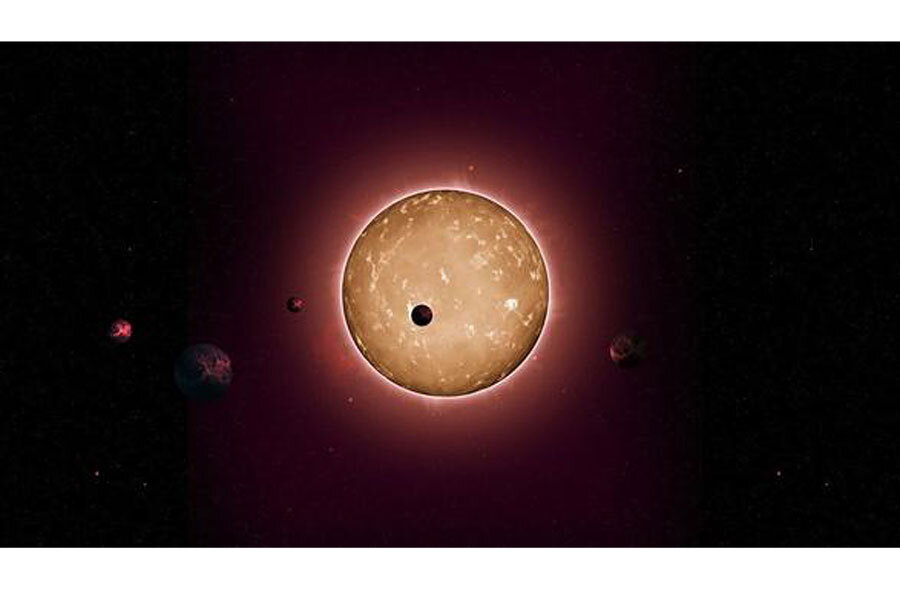This solar system has five Earth-ish planets and is twice as old as ours
Loading...
Sen—An ancient star that is 11.2 billion years old and has at least five Earth-size planets has been discovered in data from NASA’s Kepler spacecraft. The discovery will help astronomers learn more about the history of our Galaxy.
In a paper published today by the Astrophysical Journal, the team led by Tiago Campante, a research fellow at the UK's University of Birmingham, describes Kepler-444, an orange dwarf star that’s 25 per cent smaller than our Sun and is 117 light-years from Earth.
The star’s five known planets are all smaller than Earth, ranging from 0.4 to 0.74 times Earth's radius, between the sizes of Mercury and Venus. The planets are so close to their star that the furthest, Kepler-444f, orbits once every 9.7 days, and the closest, Kepler-444b, every 3.6 days. At that distance, they’re all much hotter than Mercury and are not habitable.
The team found Kepler-444 by checking through the telescope's entire four-year data set.
“We thus show that Earth-size planets have formed throughout most of the Universe’s 13.8-billion-year history, leaving open the possibility for the existence of ancient life in the galaxy,” the astronomers write in their paper.
“From the first rocky exoplanets to the discovery of an Earth-size planet orbiting another star in its habitable zone, we are now getting first glimpses of the variety of galactic environments conducive to the formation of these small worlds,” they add.
“As a result, the path toward a more complete understanding of early planet formation in the galaxy starts unfolding before us.”
Steve Kawaler, an Iowa State University professor of physics and astronomy, is a project collaborator and co-author of the paper. He said that Kepler-444 is very bright and can be easily seen with binoculars.
Watching Kepler 444's brightness change over time, Kawaler helped determine the size of Kepler-444 by studying sound waves within the star—a process called astroseismology. Those sound waves affect the star’s temperature, creating pulsating changes in brightness that offer clues to the star’s diameter, mass and age.
Kepler's primary job is finding distant planets by measuring tiny changes in brightness as they pass in front of their stars and so was able to take high-precision measurements of the sound waves effect on Kepler-444's brightness.
“This is one of the oldest systems in the Galaxy,” Kawaler said of the Kepler discovery, noting that our Sun is 4.5 billion years old. “Kepler-444 came from the first generation of stars. This system tells us that planets were forming around stars nearly 7 billion years before our own Solar System.
“Planetary systems around stars have been a common feature of our galaxy for a long, long time.”
Another member of the team, Dr Daniel Huber, of the University of Sydney, said: “We’ve never seen anything like this—it is such an old star and the large number of small planets make it very special,.
“It is extraordinary that such an ancient system of terrestrial-sized planets formed when the universe was just starting out, at a fifth of its current age. Kepler-444 is two and a half times older than our solar system, which is only a youthful 4.5 billion years old.
“This tells us that planets this size have formed for most of the history of the Universe and we are much better placed to understand exactly when this began happening.”
Related Links:
NASA Kepler: the search for exoplanets
First Earth-sized rocky planet found in star's habitable zone
Original story from Sen. © 2015 Sen TV Limited. All rights reserved. This material may not be published, broadcast, rewritten or redistributed. For more space news visit Sen.com and follow @sen on Twitter.







